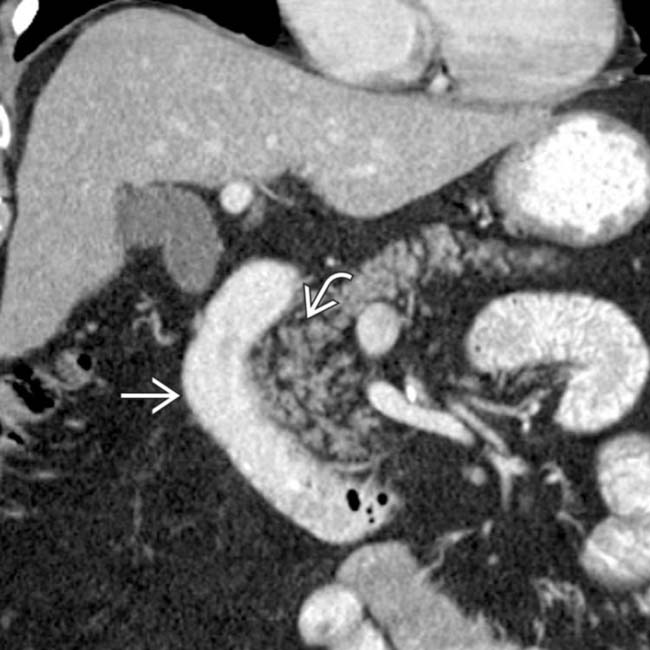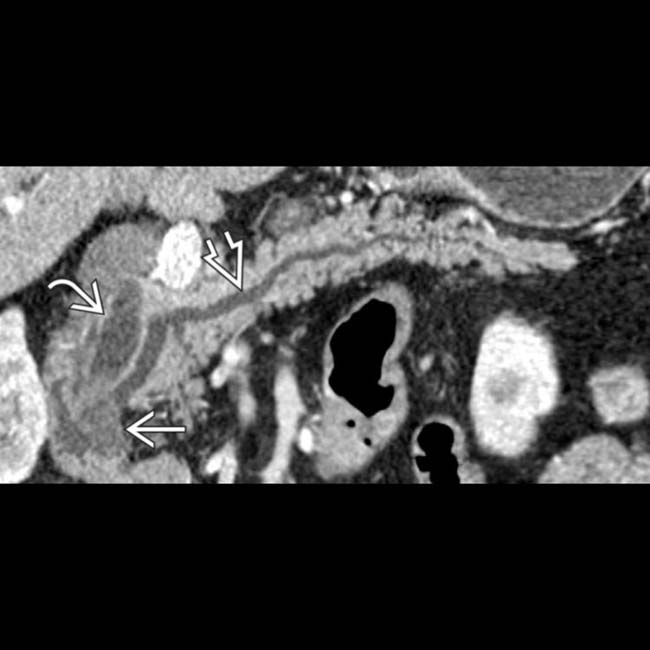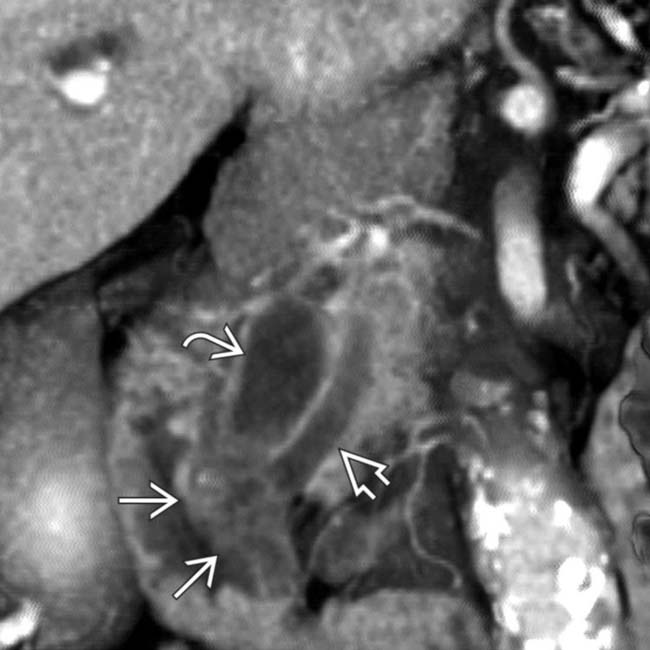
 and accessory
and accessory  pancreatic ducts do not communicate. This results embryologically from failure of fusion of the ducts between the dorsal and ventral pancreatic anlagen.
pancreatic ducts do not communicate. This results embryologically from failure of fusion of the ducts between the dorsal and ventral pancreatic anlagen.
 . The top image (A) is from a 30-year-old woman and the bottom image (B) is from a 78-year-old man. With aging, the pancreas decreases in size with increased fatty lobulation. Small calcifications and mild ductal dilatation may also be seen.
. The top image (A) is from a 30-year-old woman and the bottom image (B) is from a 78-year-old man. With aging, the pancreas decreases in size with increased fatty lobulation. Small calcifications and mild ductal dilatation may also be seen.
 to the 2nd portion of the duodenum
to the 2nd portion of the duodenum  .
.
 in the head of the pancreas and a distended gallbladder
in the head of the pancreas and a distended gallbladder  .
.
 interrupted as it enters the hypodense mass
interrupted as it enters the hypodense mass  , a typical presentation of pancreatic ductal carcinoma.
, a typical presentation of pancreatic ductal carcinoma.
 in the head of the pancreas causing biliary obstruction and dilation of the gallbladder
in the head of the pancreas causing biliary obstruction and dilation of the gallbladder  .
.
 causing partial obstruction of the bile duct
causing partial obstruction of the bile duct  , while the pancreatic duct
, while the pancreatic duct  is only mildly dilated. Further evaluation, including biopsy, confirmed a diagnosis of autoimmune (IgG4-related) pancreatitis.
is only mildly dilated. Further evaluation, including biopsy, confirmed a diagnosis of autoimmune (IgG4-related) pancreatitis.
 and pancreatic duct
and pancreatic duct  due to a small hypodense ampullary carcinoma
due to a small hypodense ampullary carcinoma  .
.
 , pancreatic duct
, pancreatic duct  , and ampullary tumor
, and ampullary tumor  .
.
 .
.
 in the pancreatic head that proved to be a gastrinoma (1 type of pancreatic endocrine tumor) that was responsible for this patient’s Zollinger-Ellison syndrome.
in the pancreatic head that proved to be a gastrinoma (1 type of pancreatic endocrine tumor) that was responsible for this patient’s Zollinger-Ellison syndrome.Stay updated, free articles. Join our Telegram channel

Full access? Get Clinical Tree



